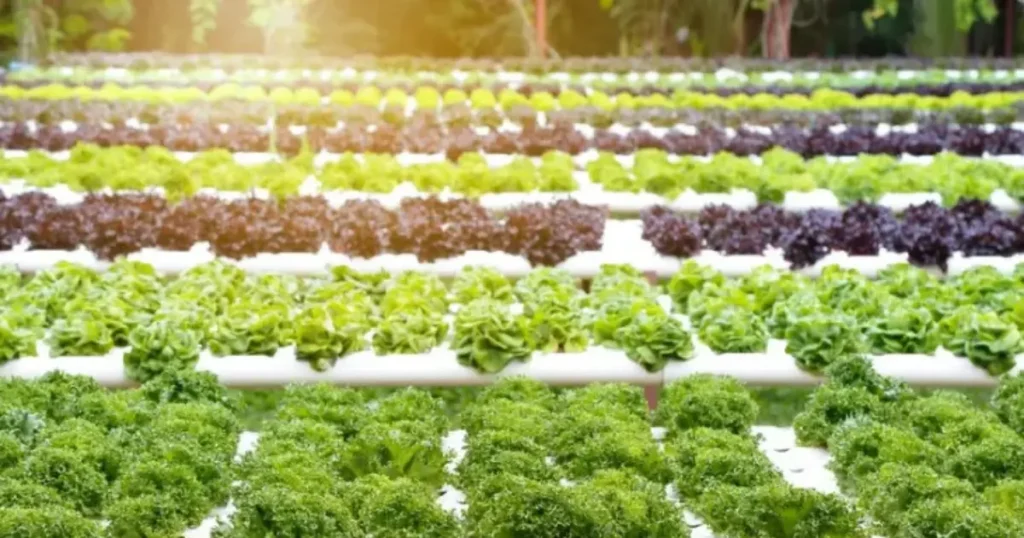Table of Contents
Toggle7 Key Steps for a Successful Hydroponic Farming Project in 2025
Hydroponic Farming Project: A Step-by-Step Guide to Success
Starting a hydroponic farming project can be an exciting and rewarding venture. As the demand for sustainable, efficient farming grows, many individuals and businesses are turning to hydroponics. This soilless farming method allows you to grow plants using nutrient-rich water, offering a solution to challenges faced in traditional agriculture. In this guide, we’ll take you through the essential steps for starting your hydroponic farming project in 2025.
Why Start a Hydroponic Farming Project?
Hydroponic farming projects are gaining popularity due to their numerous benefits. First, they use less water than traditional farming methods, making them more sustainable. Second, hydroponic systems are space-efficient, allowing you to grow crops indoors or in areas with limited arable land. Third, they have faster growth cycles, which means a quicker return on investment. Whether you’re looking to start a small-scale home garden or a larger commercial farm, a hydroponic farming project is a viable solution to modern agricultural challenges.
Essential Components for a Hydroponic Farming Project
Starting a hydroponic farming project requires understanding the essential components of the system. These include the growing medium, water supply, and nutrients. There are several types of hydroponic systems, including nutrient film technique (NFT), deep water culture (DWC), and aeroponics. Each system has its pros and cons depending on the type of crops you intend to grow.
1.Choosing the Right Hydroponic System
The first step in any hydroponic farming project is selecting the right system for your needs. If you’re a beginner, a simpler system like deep water culture (DWC) might be ideal. DWC allows plant roots to be submerged in nutrient-rich water, promoting faster growth. For those with limited space, a vertical hydroponic system may be more appropriate, as it maximizes vertical space.
2.Selecting Your Crops
Choosing the right crops is crucial for the success of your hydroponic farming project. While many plants can thrive in hydroponic systems, leafy greens such as lettuce, spinach, and kale are particularly well-suited for this method. Herbs like basil, mint, and cilantro also do well in hydroponics. As your skills grow, you can experiment with fruiting plants like tomatoes, cucumbers, and strawberries.
3.Setting Up the Growing Environment
Another key element to consider for your hydroponic farming project is the environment. Hydroponic systems are often used in controlled environments such as greenhouses or indoor grow rooms. This allows you to control variables like temperature, humidity, and light. Proper lighting is essential for photosynthesis, and using LED grow lights can provide the right spectrum of light for plant growth1..
Step-by-Step Guide to Starting Your Hydroponic Farming Project
Step 1: Planning Your Hydroponic System
Planning your hydroponic farming project is the first and most important step. This includes determining how much space you need, how many crops you want to grow, and the type of system you will use. Consider factors like water access, light sources, and the overall budget for setting up your system.
Step 2: Setting Up Your Hydroponic System
Once you’ve planned your project, it’s time to set up the hydroponic system. This involves purchasing all necessary equipment, such as a water reservoir, growing trays, pumps, and nutrient delivery systems. You’ll also need to install lights if you’re growing indoors or in a greenhouse. Take your time to ensure everything is connected properly before adding water and nutrients.
Step 3: Adding Nutrients and Water
Hydroponic systems require a specific balance of nutrients for optimal plant growth. You’ll need to choose a hydroponic nutrient solution tailored to the types of plants you’re growing. Be sure to monitor the pH level and nutrient concentration of the water to avoid imbalances that could harm your crops.
Step 4: Monitoring and Maintenance
Once your hydroponic farming project is up and running, regular maintenance is key to ensuring success. Keep track of your plants’ health, and make adjustments as needed. This includes checking nutrient levels, ensuring proper water flow, and adjusting light exposure.
Benefits of a Hydroponic Farming Project
Hydroponic farming offers several advantages over traditional soil-based agriculture. One major benefit is water conservation. Since water is recirculated in a hydroponic system, it uses significantly less water than conventional farming methods. This is particularly important in regions facing water scarcity. Additionally, hydroponics enables year-round production, as you can grow crops indoors, unaffected by seasonal changes.
Another benefit is the reduced need for pesticides. Since hydroponic systems are often soil-free, the risk of pests and diseases is lower, reducing the need for chemical interventions. This makes hydroponic farming an eco-friendly and healthier option for growing produce.
Conclusion: Starting Your Hydroponic Farming Project in 2025
A hydroponic farming project offers a sustainable and efficient way to grow crops, especially as more people seek innovative farming solutions in 2025. By following the steps outlined in this guide, you can embark on a successful hydroponic farming journey. With the right system, crops, and environment, your hydroponic project can thrive, providing fresh, nutrient-rich produce all year long.
Whether you’re a hobbyist or an entrepreneur, the opportunities in hydroponic farming are vast. Start planning your project today and be part of the future of agriculture.

